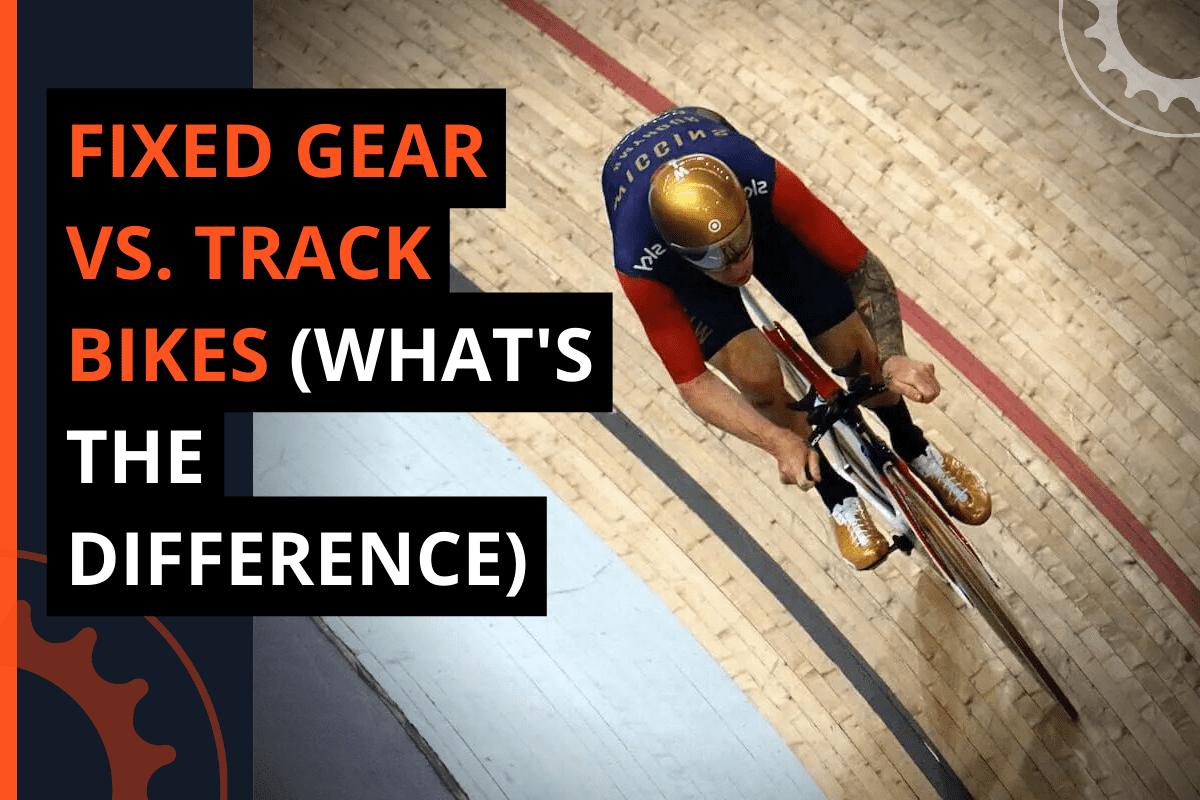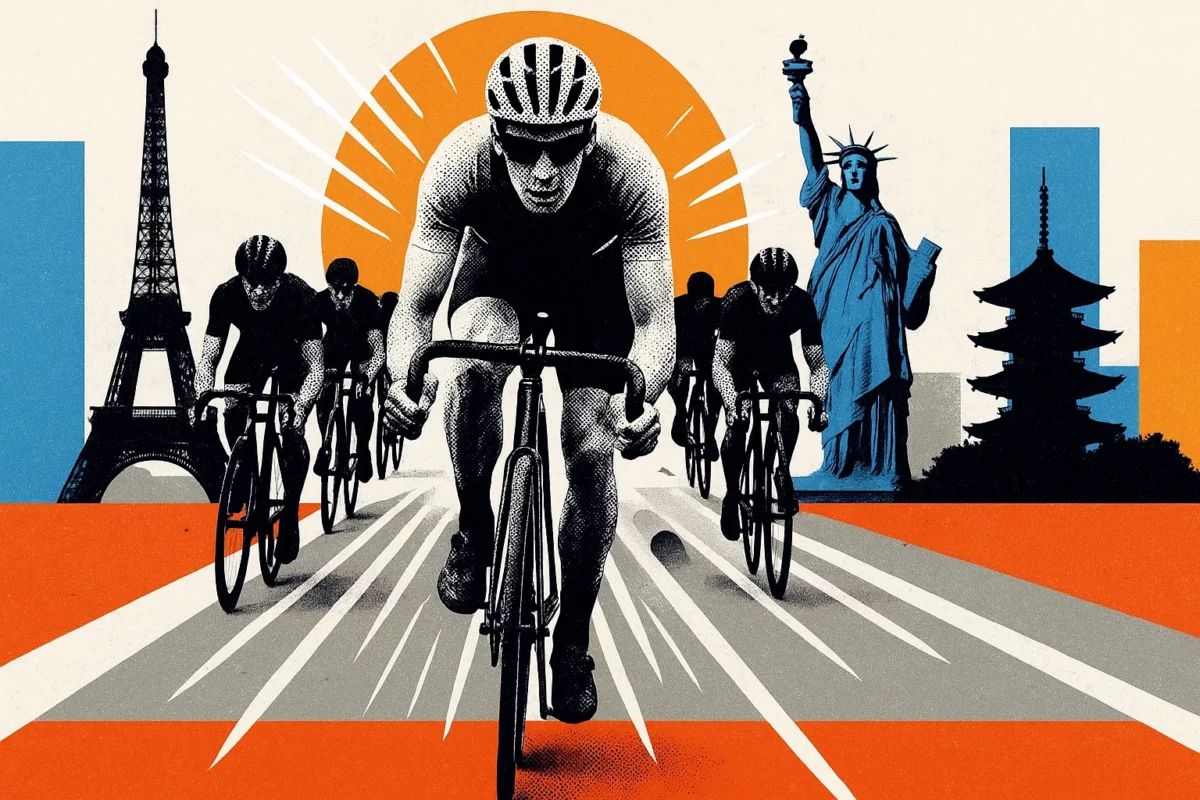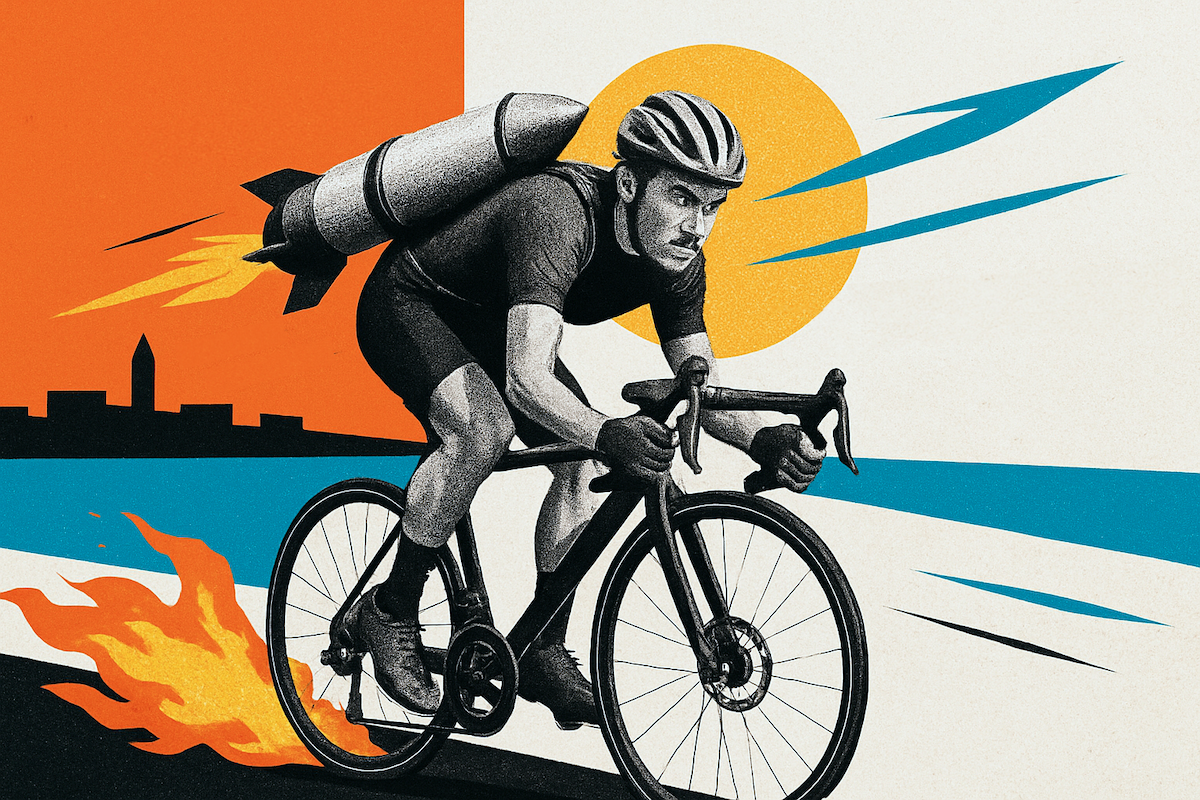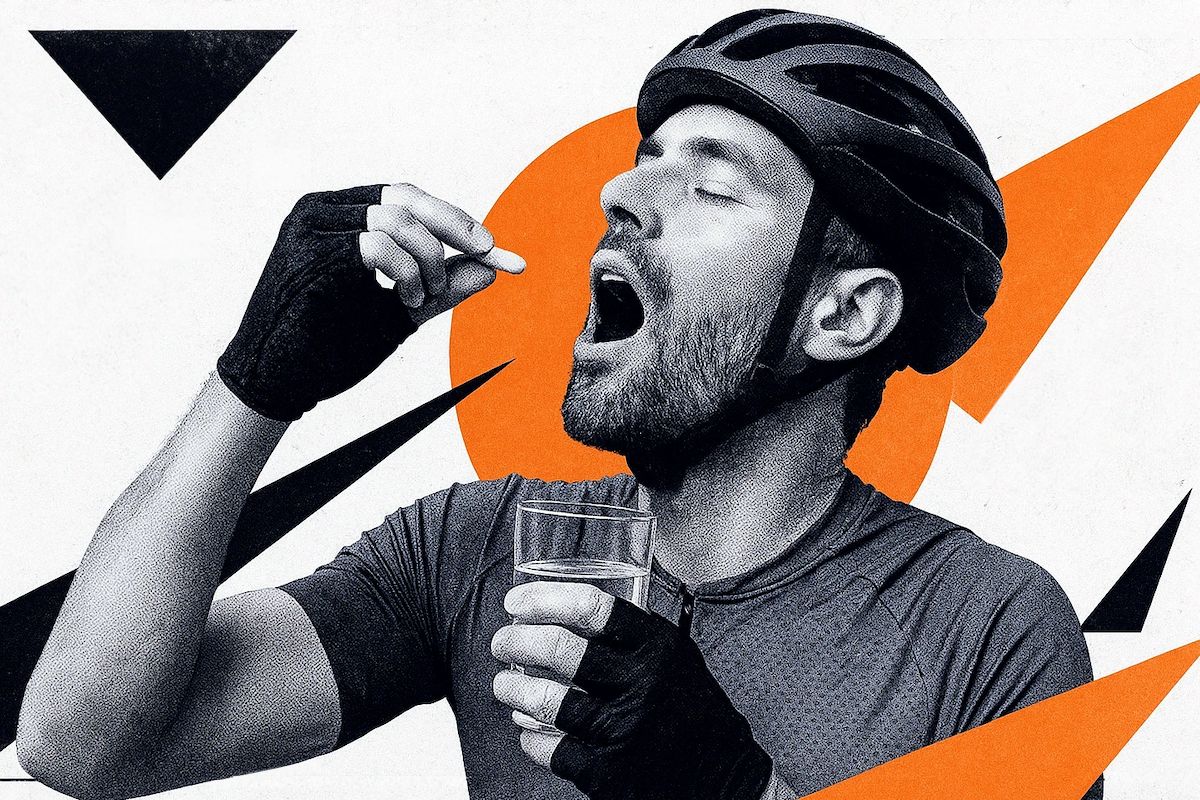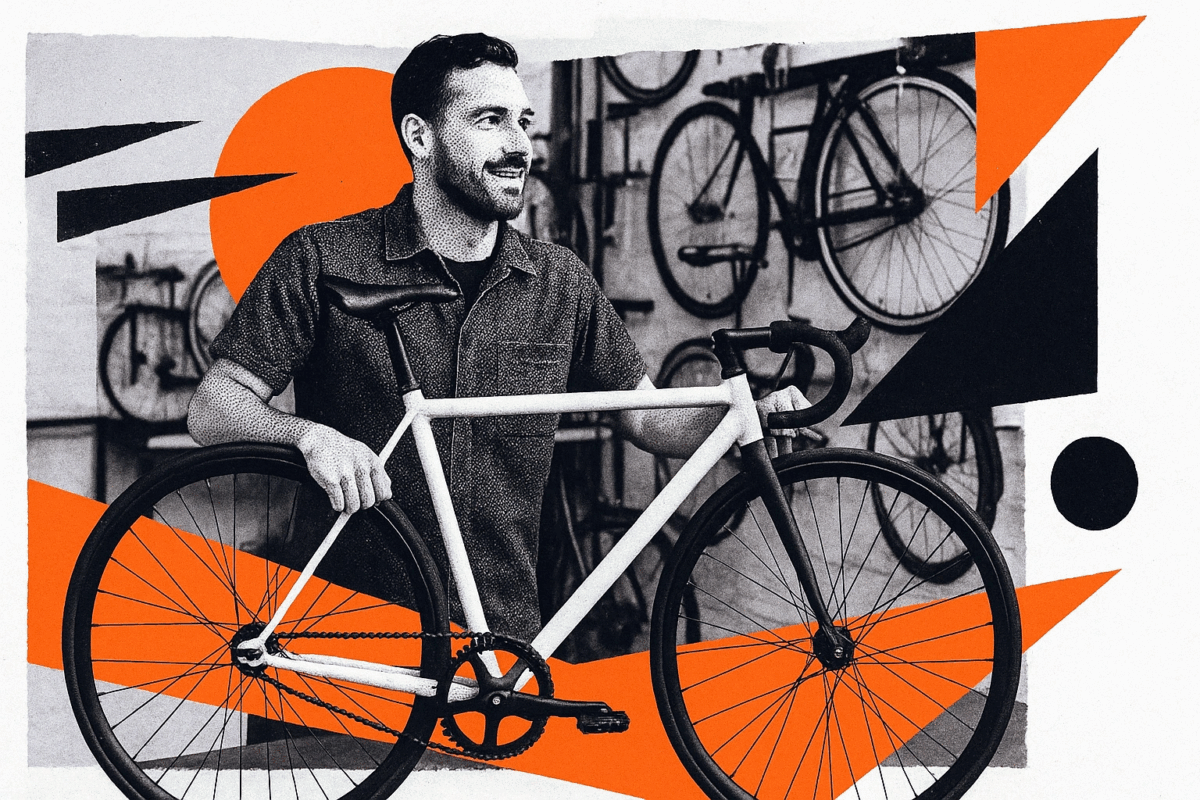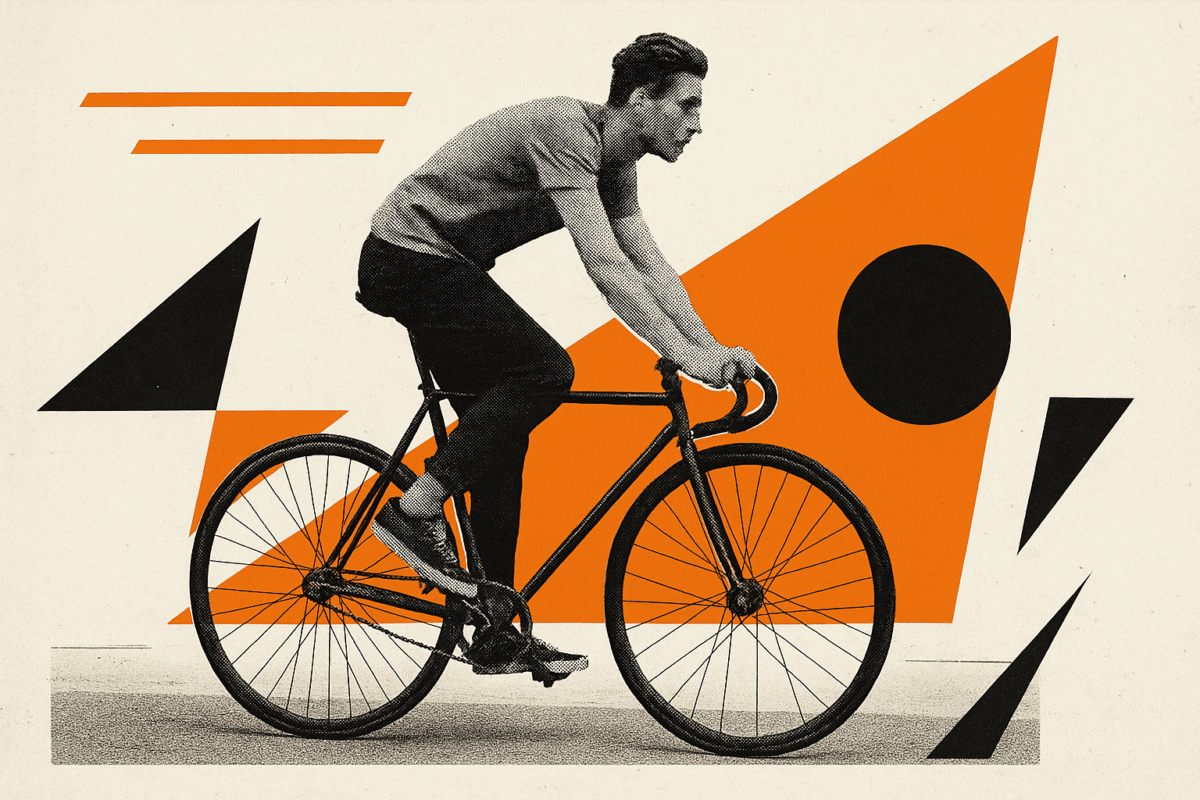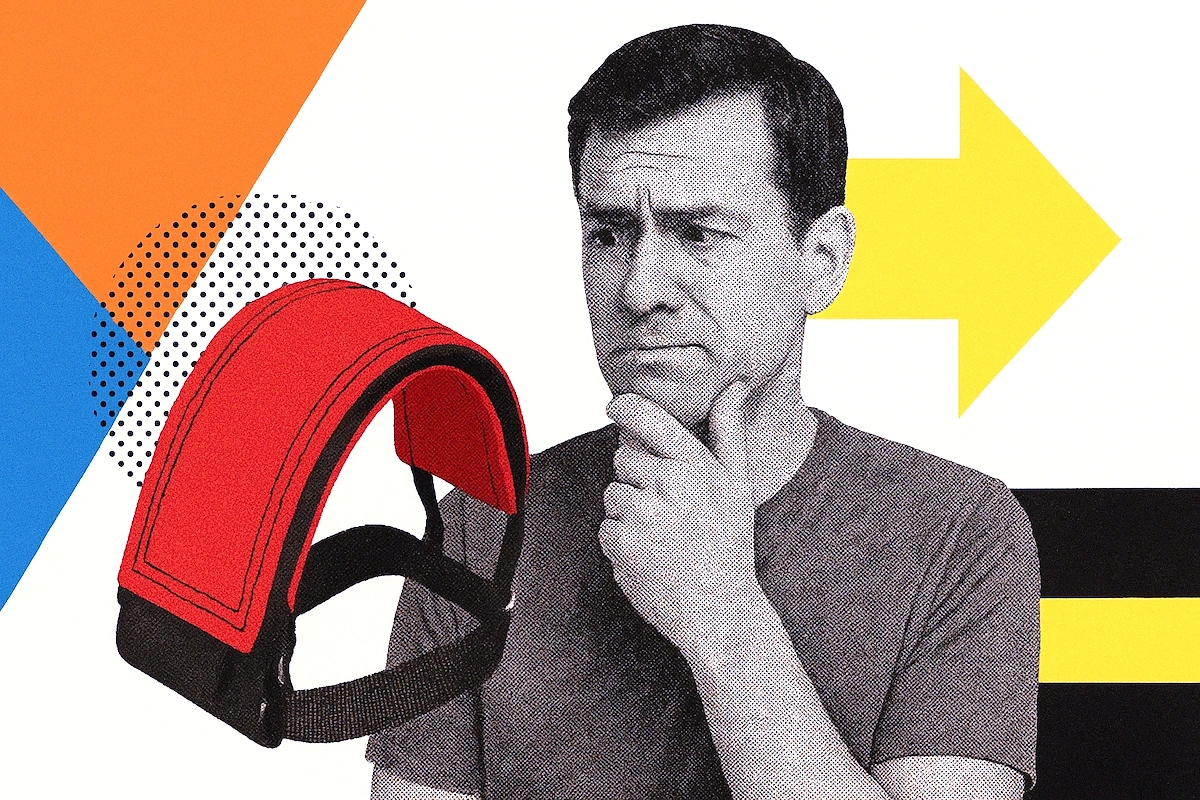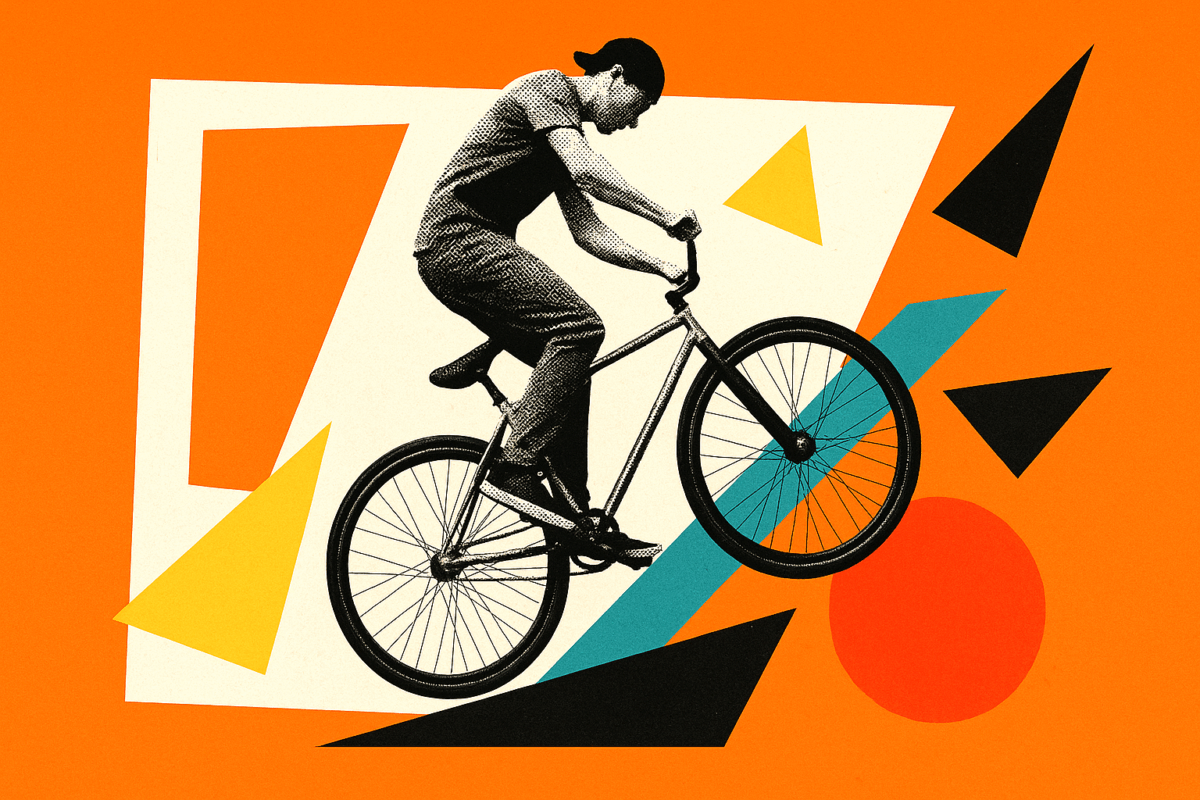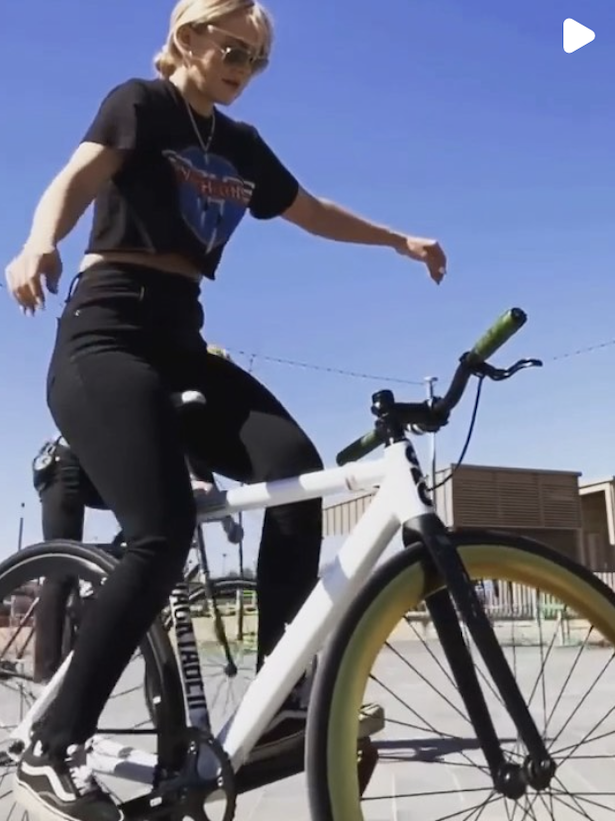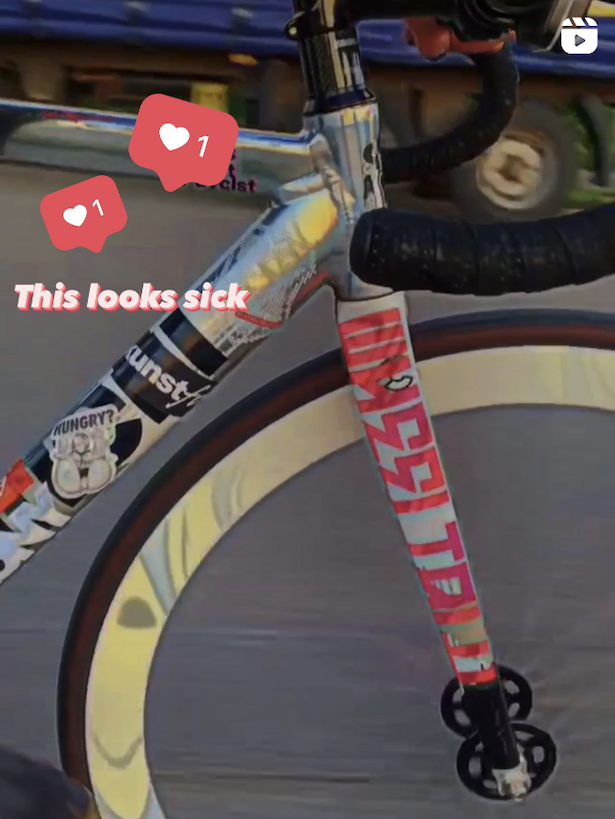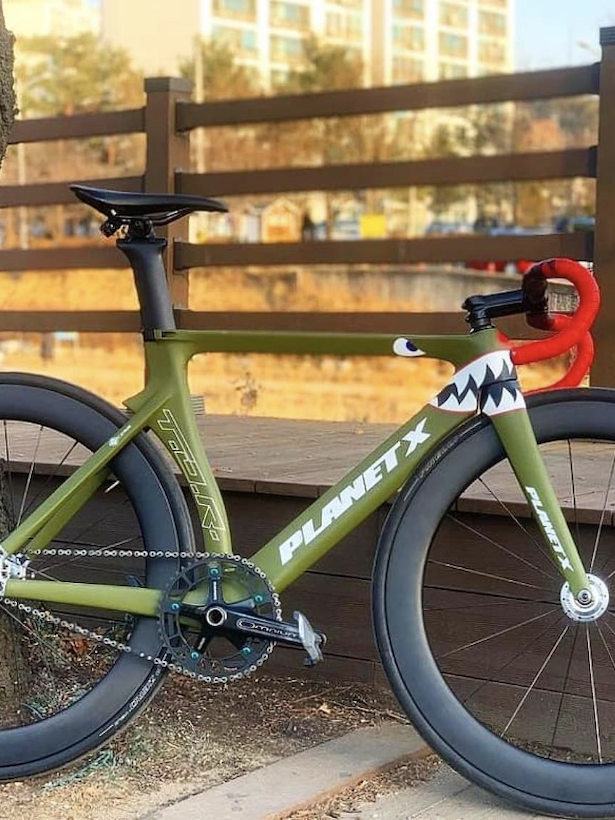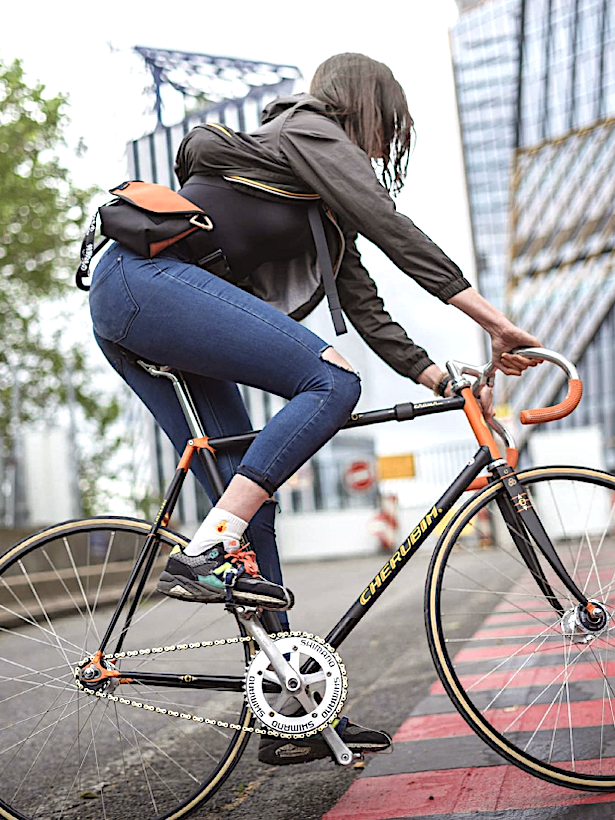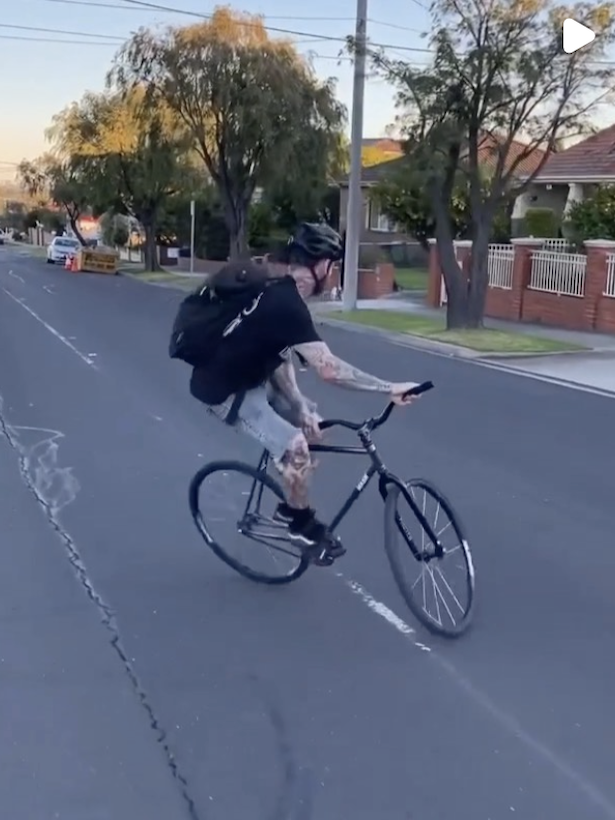
TL;DR:
- Track bikes have aggressive geometry (74-76° angles) designed for velodrome banking, making them uncomfortable and impractical for street riding
- Brakeless track bikes are illegal in most US cities—California, Florida, New York, and Texas all require brakes that enable stopping within 25 feet from 10 mph
- Fixed gear bikes cost $400-900 for quality builds, while track bikes start at $1,500 and Olympic-level machines hit $60,000+
- Fixies include front brakes and road-friendly geometry, making them legal, comfortable, and practical for actual daily use
Most people use “fixed gear” and “track bike” like they’re the same thing. They’re not. ⚡ And buying the wrong one will cost you serious money, uncomfortable rides, and possibly a ticket from your local PD.
Track bikes are built exclusively for velodrome racing—those steeply banked oval tracks where riders hit 50+ mph. Fixed gear bikes (fixies) are for everything else: commuting, tricks, city riding, and actually having fun. 👍 The geometry is different, the purpose is different, and the price is wildly different.
Here’s the truth: unless you’re actually racing at a velodrome, you want a fixie, not a track bike. Period.
A video titled “Single-speed vs fixie | Why fixed-gear bikes are ridiculous, except for these three things” from the Shifter YouTube channel.
What Actually Makes a Track Bike Different
Track bikes aren’t “street bikes without brakes.” They’re purpose-built racing machines designed for one specific environment: the velodrome. These banked oval tracks feature 45-degree corners on standard 250-meter circuits, and riders regularly exceed 85 km/h (52.8 mph) through the turns.
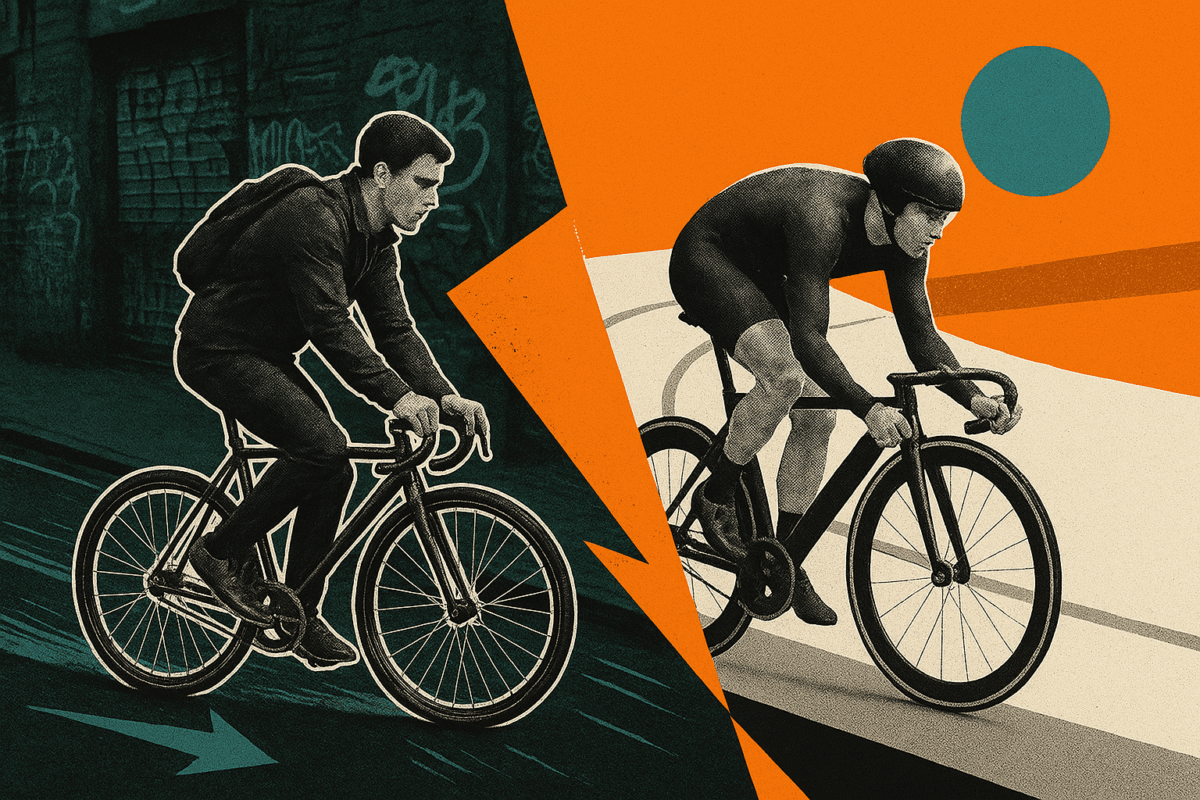
The geometry reflects this singular purpose. Track bikes use 74-76° head tube and seat tube angles—significantly steeper than the 72-74° angles on road bikes. This creates twitchy, responsive steering that’s essential for track racing but absolutely miserable for navigating city streets and potholes.

Did you know?
The higher bottom bracket on track bikes (around 45mm drop vs 69mm on road bikes) exists so riders can pedal through steep banking without their pedals scraping the track surface.
The aggressive positioning puts riders in an aerodynamic tuck that prioritizes speed over comfort. Your back will hate you after 30 minutes of commuting on one. The short 380mm chainstays and steep angles make the bike incredibly stiff—every bump transfers directly to your body.
The Parts That Matter
Track bikes strip away everything that isn’t speed. No brakes. No extra gears. Just a fixed drivetrain, narrow tires inflated to maximum pressure, and a frame built as stiff as possible. Comfort isn’t on the spec sheet.
The fork rake is reduced to around 35mm (compared to 45mm on road bikes) to make steering faster and more responsive. Combined with the steep head angle, you get about 61mm of trail—enough to make the bike stable at high speeds on smooth banking but sketchy as hell on rough pavement.
| Specification | Track Bike | Fixed Gear Bike |
|---|---|---|
| Head Tube Angle | 74-76° | 72-74° |
| Seat Tube Angle | 74-76° | 72-74° |
| Bottom Bracket Drop | ~45mm | ~69mm |
| Chainstay Length | ~380mm | ~410mm |
| Fork Rake | ~35mm | ~45mm |
| Brakes | None (illegal on track) | Front brake standard |
| Typical Price | $1,500-$60,000+ | $400-900 |
What a Fixed Gear Bike Actually Is
A fixed gear bike—or fixie—is exactly what most people picture when they think “track bike for the street.” Single gear, no coasting (the pedals move whenever the wheels move), and crucially: a front brake for stopping legally and safely.
Fixies use comfortable road geometry that won’t destroy your back. The relaxed angles (72-74°) and standard bottom bracket height make them practical for actual riding—commuting, cruising, tricks, whatever. They’re designed for pavement, potholes, and real-world use.

Did you know?
The fixed gear boom started with bike messengers in the 1990s who valued simplicity, low maintenance, and the direct connection to the bike. The messenger culture transformed fixies from niche track bikes into a legitimate street riding style.
The customization culture around fixies is massive. You’ll find endless options for colorful components, different handlebar styles, and aesthetic builds. Track bikes? They’re optimized for racing specs, not personal expression.
Why You Shouldn’t Ride a Track Bike on the Street
Safety Issues
Let’s be direct: brakeless track bikes on city streets are dangerous and stupid. There’s a reason professional track riders only race on closed velodromes. When you need to stop immediately—because a car door opens, a pedestrian steps out, or traffic suddenly stops—backpedaling to slow down doesn’t cut it.
Track bikes can take twice the distance to stop compared to bikes with proper brakes. In emergency situations, that extra distance means crashes.

Critical warning!
Federal CPSC regulations require bicycles to stop within 15 feet from 10 mph. California law (VEH 21201) mandates brakes enabling a one-wheel skid on dry pavement. Most states follow similar standards. Brakeless track bikes don’t meet these requirements—meaning they’re illegal for street use in most US cities.
Legal Problems
Philadelphia considered a $1,000 fine for riding brakeless bikes on public streets. That’s not an outlier—cities nationwide have cracked down on brakeless riding. The legal requirement is simple: your bike needs to stop within 25 feet from 10 mph speed on dry, level pavement.
Washington DC is the only US jurisdiction that explicitly allows fixed gear bikes without separate brakes—but only if the rider can demonstrate the ability to stop using pedals alone. Every other state? You need brakes.
Comfort Nightmare
Track Bike Problems
- Aggressive geometry causes back/neck pain
- Stiff frame transmits every bump
- High BB makes standover awkward
- Twitchy steering on rough roads
- No brakes = sketchy descents
Fixed Gear Solutions
- Road-friendly geometry for comfort
- Balanced stiffness and compliance
- Standard height for normal use
- Stable, predictable handling
- Front brake for controlled stopping
Track bike geometry puts you in a forward-aggressive position designed for laying down power on smooth banking. On city streets with potholes, rough pavement, and uneven surfaces? You’ll feel every impact. The stiffness that makes track bikes fast on velodromes makes them punishing on real roads.
Cost vs Practicality
Here’s where it gets absurd. Entry-level track bikes start around $1,500. Quality builds run $5,000-15,000. Olympic-level track bikes? The Australian team’s Factor Hanzo costs $60,000 USD. Japan’s V-IZU TCM2 frameset rings in at €126,555—the most expensive bike at the 2024 Paris Olympics.
For comparison, you can get an excellent fixie for $400-900. The State Bicycle Core-Line runs $525. The Fuji Feather—a legitimate quality build—costs $749. You’re spending 2-10x more for a track bike that’s objectively worse for street riding.
The Poser Factor
Let’s address the elephant in the room. Riding a brakeless track bike on city streets doesn’t make you look like a pro racer. It makes you look like someone who doesn’t understand cycling culture or basic safety. Track cyclists—real ones—ride these bikes exclusively on velodromes for a reason.

Did you know?
Velodromes ban brakes during racing because uniform equipment creates predictable behavior. Everyone slows the same way (by resisting pedal rotation), which makes pack racing safer at 50+ mph speeds.
When a Fixie Is Perfect (And When It’s Not)
Fixie Wins
- Urban commuting and city riding
- Flat to moderate terrain
- Low maintenance needs
- Budget-friendly ($400-900)
- Customization and style options
- Lightweight and portable (19-21 lbs)
Fixed gear bikes excel at flat to moderate terrain urban riding. The simple drivetrain means minimal maintenance—no derailleurs to adjust, no shifters to repair, just a chain and two cogs. Replacement parts are affordable and widely available.
They’re incredibly lightweight—quality chromoly builds weigh 19-21 lbs, making them easy to carry upstairs or onto public transit. The direct connection between pedaling and wheel movement gives you precise control and a unique riding feel that road bikes can’t match.
For commuting under 10 miles, fixies are perfect. Budget-friendly (starting at $400), stylish, and practical. The Kilo TT at $500 has reigned as the best beginner fixie for over a decade in the US market.
Fixie Limitations
- Hill climbing is brutal with single gear
- Single gear constraints on varied terrain
- Not designed for off-road riding
- Learning curve (no coasting takes practice)
Hills are brutal on a single gear. That 48/17 ratio (around 76 gear inches) that works great on flats becomes a quad-destroying workout on steep climbs. It’s doable—plenty of riders tackle hilly cities on fixies—but it’s harder. Much harder.
The single gear also limits your top speed on descents unless you can spin at 180+ RPM (which most riders can’t). And fixies aren’t designed for off-road terrain or technical riding.
Making the Right Choice
Track bikes are specialized equipment for a specific purpose. Buying one for street riding is like purchasing Formula 1 tires for your daily commute—expensive, impractical, and frankly silly. They’re uncomfortable, often illegal, and objectively worse at being a usable bicycle.
Unless you’re actually racing at a velodrome, you want a fixie—not a track bike. The price difference alone ($400-900 vs $1,500-60,000+) should tell you everything.
Fixies give you the fixed gear experience—that direct connection, the simplicity, the style—without the drawbacks. Legal brakes, comfortable geometry, reasonable prices, and actual practicality for daily riding.
Want to try track racing? Great! Go to your local velodrome, take a beginner class, and rent a track bike. Many velodromes offer free rentals during intro classes. You’ll quickly understand why these bikes belong on tracks and nowhere else.
Frequently Asked Questions (FAQ)
Yes, but it’s not ideal. Adding brakes to a track bike may require drilling holes in the frame (if they’re not already there) and doesn’t fix the aggressive geometry, stiff ride, or uncomfortable positioning. You’d be better off buying a fixie designed for street use from the start. Track frames with road-friendly modifications exist, but at that point you’re essentially building a fixie with extra steps.
For actual velodrome racing, yes—brakes are banned by UCI regulations. Some “track-style” bikes sold for street use come with brake mounts, but those aren’t true track bikes. If you’re buying a bike specifically for velodrome racing, it won’t have brakes. Street-legal versions get marketed as “track bikes” but they’re really just aggressive-geometry fixed gear bikes.
Entry-level track bikes suitable for local velodrome racing start around $1,500-2,500. Mid-range builds run $3,000-8,000. Professional/Olympic-level machines? The Look P24 costs around $20,726, while Australia’s Factor Hanzo costs $60,000 USD. For comparison, quality fixed gear bikes for street use cost $400-900.
Most velodromes allow fixies during open sessions or beginner classes, but they’re banned from actual racing. Track bikes must meet specific regulations: higher bottom bracket, specific gear ratios, no brakes, and aggressive geometry. Your street fixie won’t cut it for competitive track racing—the geometry and specs are fundamentally different.
No—despite the stereotype, most professional bike messengers ride fixies with brakes, not brakeless track bikes. The “messenger on a track bike” image is mostly hipster mythology from the 2000s fixie boom. Real messengers prioritize reliability, stopping power, and not getting tickets. Track bikes are impractical for actual courier work in cities.
Final Thoughts
The fixed gear vs track bike confusion exists because people treat them like they’re interchangeable. They’re not. Track bikes are specialized racing equipment built for one purpose: going fast on smooth, banked velodromes. Everything about them—geometry, components, price—reflects that singular focus.
Fixies are practical street bikes that give you the fixed gear experience without the downsides. Legal brakes, comfortable geometry, reasonable prices, and actual usability for commuting or cruising. That’s what 99% of riders actually need.
Bottom line: If you’re not racing at a velodrome (and let’s be honest, you’re probably not), save yourself thousands of dollars and significant discomfort. Get a fixie. Your wallet, your back, and your local police will thank you.
What’s your take—team fixie or team track bike? Drop your thoughts in the comments.
Sources and References
- Bike Forums: Track Geometry Specifications
- Sprinter della Casa: Road vs Track Geometry
- CPSC Bicycle Brake Requirements
- California Bicycle Laws – Brake Requirements
- Florida Cycling Law: Fixed Gear Legality
- Medium: Best Fixed Gear Bikes by Budget
- Velo: Look P24 Olympic Track Bike Pricing
- Bicycling: Australia’s $60K Olympic Track Bike
- BikeRadar: 2024 Olympic Track Bike Prices
- Wikipedia: Velodrome
- Wikipedia: Track Cycling
- USA Cycling: Track Cycling Guide
